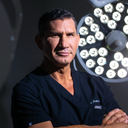My nose feels stuffy on one side all the time despite not having a cold. When I look inside my nose it seems to be uneven on one side. Could this be causing the stuffy feeling and wheezing sound when I breathe? Also, would insurance cover this procedure?
Answers (19)
From board-certified doctors and trusted medical professionals
Dr. Jonathan Kulbersh, MD

Dr. Jonathan Kulbersh, MD
Board Certified Facial Plastic Surgeon
Answer
Dr. Houtan Chaboki, MD

Dr. Houtan Chaboki, MD
Board Certified Facial Plastic Surgeon
Answer
Dr. Philip J. Miller, MD, FACS

Dr. Philip J. Miller, MD, FACS
Board Certified Facial Plastic Surgeon
Answer
Dr. Edwin F. Williams, III, MD

Dr. Edwin F. Williams, III, MD
Board Certified Facial Plastic Surgeon
Answer
Dr. Toby Mayer, MD

Dr. Toby Mayer, MD
Board Certified Facial Plastic Surgeon
Answer
Dr. Richard W. Westreich, MD

Dr. Richard W. Westreich, MD
Board Certified Facial Plastic Surgeon
Answer
Dr. Richard G. Reish, MD, FACS

Dr. Richard G. Reish, MD, FACS
Board Certified Plastic Surgeon
Answer
Dr. Kenneth Yu, MD

Dr. Kenneth Yu, MD
Board Certified Facial Plastic Surgeon
Answer
Dr. Douglas L. Vander Woude, MD

Dr. Douglas L. Vander Woude, MD
Board Certified Plastic Surgeon
Answer
Dr. John Michael Thomassen, MD

Dr. John Michael Thomassen, MD
Board Certified Plastic Surgeon
Answer
More Rhinoplasty Questions
See all Rhinoplasty Q&AWE SEND PRETTY
EMAILS
What’s trending? Who’s turning heads? Which TikTok myths need busting? We’ve got you. No fluff, no gatekeeping—just real talk. Get our free, unfiltered newsletter.